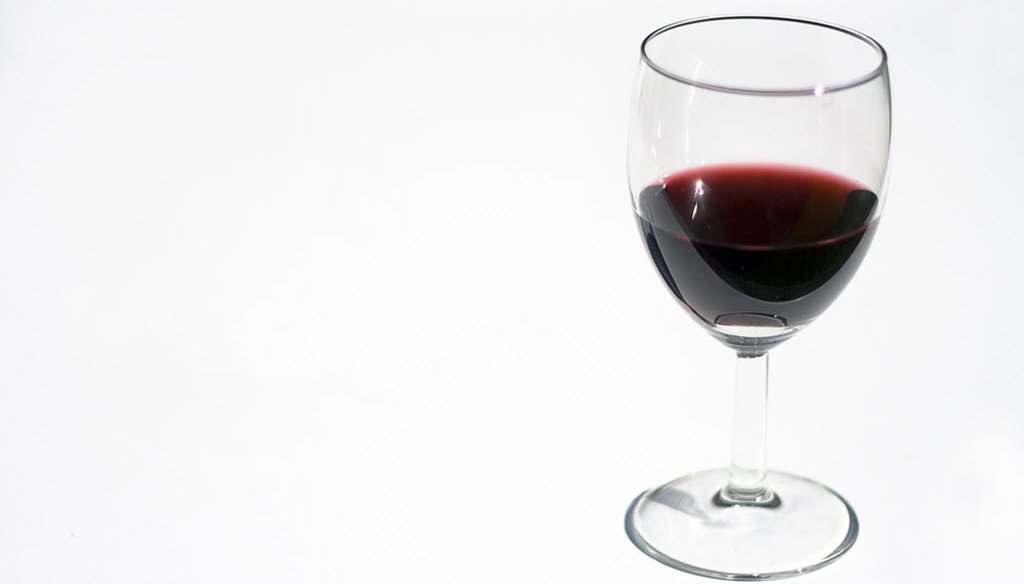

Our only agenda is to publish the truth so you can be an informed participant in democracy.
We need your help.


If the blood-alcohol concentration standard for drunken driving were changed to 0.05 from 0.08, could one glass of wine make a person drunk?
On May 14, 2013, a federal agency recommended reducing the threshold for evidence of drunken driving from a blood-alcohol concentration of 0.08 to 0.05.
That means having a glass of wine at dinner might make a person drunk, a spokesman for the Tavern League of Wisconsin told the Milwaukee Journal Sentinel the same day.
Under a BAC standard of 0.05, a person could get nailed for DUI after one drink?
Tavern League’s evidence
The statement was made by Scott Stenger, a Madison lobbyist whose clients include the tavern league. He told us he based his claim on news articles about the 0.05 recommendation, including a report from the Journal Sentinel and The Associated Press, and a chart on blood-alcohol concentration from the Texas Alcoholic Beverage Commission.
The news covered the recommendation by the National Transportation Safety Board, which investigates transportation accidents and makes recommendations based on its findings. The board said states should cut the current blood-alcohol level for evidence of intoxication as part of a series of ideas aimed at reducing alcohol-related highway deaths.
In its report, the Associated Press said 0.05 is "about one drink for a woman weighing less than 120 pounds," and that a drink is defined as 12 ounces of beer, 4 ounces of wine, or 1 ounce of 80-proof alcohol "in most studies."
Meanwhile, the Texas agency chart that Stenger cited says its BAC data comes from another federal body, the National Highway Traffic Safety Administration, which works to prevent highway crashes.
That data says essentially what Stenger and AP did: A 100-pound woman could reach 0.05 after one drink.
(Incidentally, both the AP and the chart used by the Texas agency said a 160-pound man could reach 0.05 after consuming two drinks in one hour.)
So, there’s evidence that a limited group of drinkers -- women weighing under 120 pounds -- could be legally drunk after one drink, if the standard for drunken driving were reduced to a blood-alcohol level of 0.05.
What other evidence is out there?
BAC calculators
We checked three online calculators that provide blood-alcohol concentration estimates based on various factors, including gender and weight. They generally found a BAC of less than 0.05 for a 100-pound woman consuming one drink.
The calculator at the Wisconsin Department of Transportation (which also has a smartphone app), says the BAC would be 0.03.
A more detailed calculator from the University of Notre Dame’s Office of Alcohol and Drug Education says the BAC would be 0.04 for a 5-ounce glass of wine, if the wine is red and 12.5 percent alcohol.
And the calculator at Central Connecticut State University’s Office of Alcohol and Drug Education says the BAC would be 0.05 after a 5-ounce glass of table wine.
So, why do the blood-alcohol concentration figures vary?
Well, as we noted, all of the figures are estimates.
The Wisconsin DOT also points out that besides gender, weight and the amount of alcohol consumed, other factors are in play. Your BAC will be higher if you drink faster or drink on an empty stomach. Women reach higher BACs faster because they have less water in their bodies and more adipose tissue (fat), which is not easily penetrated by alcohol.
Jan Grebel, a chemical test supervisor for the DOT, told us about another factor: If you drink frequently, your liver can break down alcohol more efficiently, but if you don’t, your BAC would be higher after even one drink.
Grebel quoted to us from a chart she utilizes when testifying in court in drunken driving cases. She said the chart estimates the BAC at 0.047 -- nearly 0.05 -- for a 100-pound woman after one drink.
But Grebel said that would be the maximum BAC in that instance.
Most people would not reach 0.05 after one drink, she said.
Our rating
The Tavern League of Wisconsin said a proposal to make 0.05 the standard for drunken driving would mean that having a glass of wine at dinner could make a person drunk.
The statement is accurate, in that it’s possible an individual could reach 0.05 after one drink. But it needs additional information, namely that the situation would apply only in a small number of instances and would depend on other factors, such as drinking on an empty stomach.
We rate the statement Mostly True.
Milwaukee Journal Sentinel, "U.S. agency backs lower blood-alcohol limit for drivers," May 14, 2013
Interview, Wisconsin Tavern League lobbyist Scott Stenger, May 15, 2013
Interview, Wisconsin Department of Transportation chemical test supervisor Jan Grebel, May 15, 2013
Interview, Wisconsin State Patrol Maj. Susan Huxtable, director of the state Bureau of Transportation Safety, May 15, 2013
Texas Alcoholic Beverage Commission, Blood-alcohol percentage charts
Associated Press, "Tougher drunken driving threshold recommended," May 14, 2013
Wisconsin Department of Transportation, Blood/Breath Alcohol Concentration calculator
University of Oklahoma, BAC calculator
University of Notre Dame Office of Alcohol and Drug Education, BAC calculator
American Prosecutors Research Institute, "Alcohol toxicology for prosecutors," July 2003
In a world of wild talk and fake news, help us stand up for the facts.
